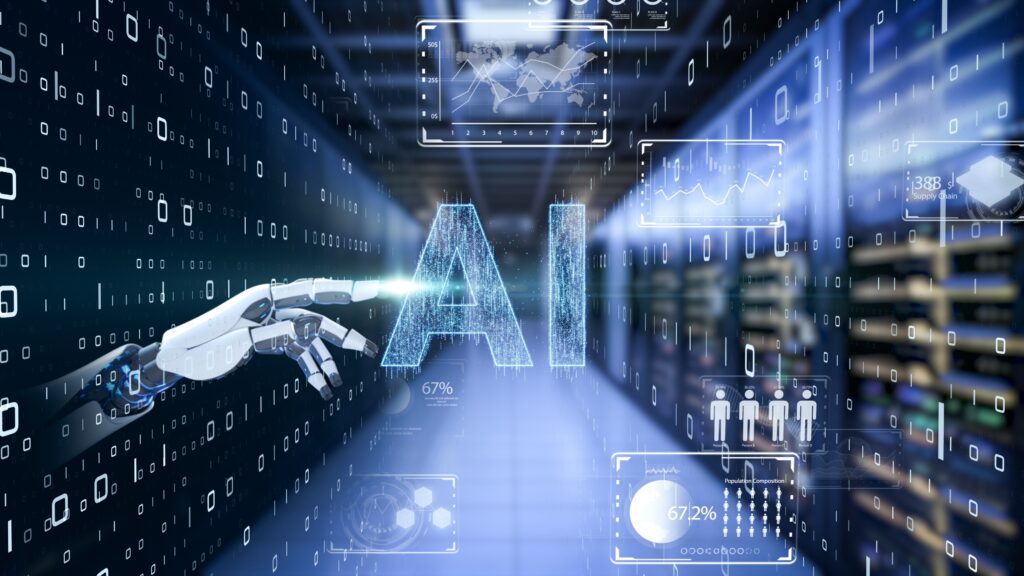
Digital infrastructure forms the backbone of our interconnected world, and it’s increasingly powered by artificial intelligence (AI). As a result, more data centers are integrating AI. These vital hubs are responsible for processing, storing, and delivering data, but they’re rife with opportunities for greater efficiency.
The future of AI in data center management promises not only increased efficiency and reliability but also the potential to reshape the way we interact with technology. Exciting possibilities and trends are set to redefine how data centers operate, from automation-driven optimization to the emergence of edge computing.
A new level of automation
The rise of AI marks a new era of powerful automation in data center management. Gone are the days of manually provisioning servers, configuring hardware, and managing software patches. AI-driven solutions have stepped in to shoulder the burden of these repetitive tasks.
Automation also extends to asset management. With the advent of AI-powered digital twins, data centers can now create real-time simulations of their operations for instant optimizations and adjustments. This level of automation streamlines operations and liberates human staff from mundane tasks, empowering them to focus on strategic objectives.
The impact of automation in data center management extends beyond efficiency. It also allows data centers to become self-sustaining, continuously adapting to changing demands and conditions.
Predictive maintenance for better uptime
AI’s role in data center management extends to predictive maintenance, where it is ushering in a new era of uptime reliability. By harnessing the power of AI, data centers can analyze sensor data and historical trends to foresee potential equipment failures before they occur. Imagine AI-driven robots patrolling data center aisles, monitoring equipment health, and performing maintenance tasks.
Thanks to AI, data center operators are no longer at the mercy of unexpected equipment failures and downtime disruptions. With predictive maintenance capabilities, operators can proactively address issues, enhance equipment longevity, and optimize operational efficiency. This shift toward predictive maintenance represents a fundamental change in how data centers operate, emphasizing proactive measures over reactive responses to equipment failures.

Sustainable energy optimization
Data centers are notorious for their energy consumption, and sustainability is a growing concern. As these facilities face challenges in minimizing their energy usage — including cooling system inefficiencies and power distribution complexities — AI solutions are poised to address these issues.
AI-powered systems can dynamically adjust cooling systems based on real-time server heat output so resources can be allocated more effectively. AI can also streamline workload placement, ensuring servers operate at their most energy-efficient levels to reduce the data center’s carbon footprint and generate substantial cost savings.
Enhanced security
Enhancing data center security is a top priority in an era of increasing cyberthreats. AI offers the potential for powerful safeguards. For instance, intelligent security systems provide continuous monitoring for anomalies and potential threats. Meanwhile, deep learning algorithms — with their ability to analyze vast amounts of data — can detect even the most subtle deviations in network traffic and system logs, alerting security teams to potential breaches in real time.
AI-driven security also extends to physical security. Facial recognition technology combined with anomaly detection systems can bolster physical security measures within data centers. This advanced approach guarantees only authorized personnel have access to critical infrastructure while identifying and responding to any suspicious activity promptly.

The rise of edge computing
Edge computing involves processing data closer to the source, reducing latency and enabling real-time decision-making. AI’s ability to process and analyze data rapidly is crucial in these edge data centers, where split-second decisions can make a significant difference.
AI-powered devices at the edge — such as IoT sensors and edge servers — collaborate seamlessly with central data centers. They collect and process data locally, making instant decisions while offloading heavier computational tasks to central data centers when necessary. This synergy between AI-driven edge devices and central data centers allows for better resource utilization and delivers rapid responses to changing demands.
Making data centers smarter
The future of AI in data centers is bright. AI brings intelligence and automation to data center management, improving efficiency, reliability, and security while reducing operating costs and the environmental impact. By embracing AI and its potential, organizations can ensure their data centers continue to power the digital age effectively and responsibly.

Recent Comments